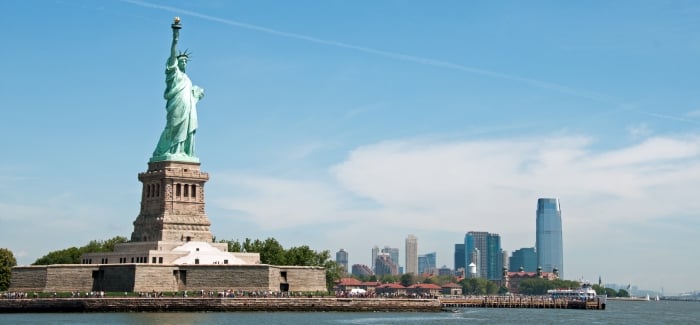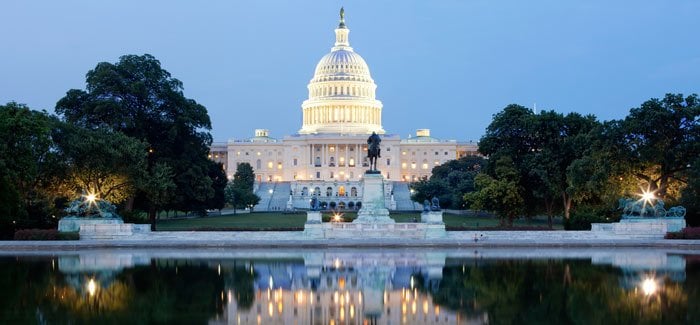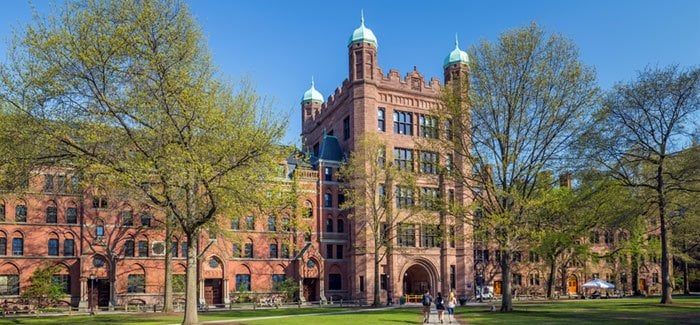Graduate Study in the US: Guide for International Students
11/1/2016
The planet’s third-largest country by both area and population, the US is a world leader across pretty much every sphere of human activity – business, technology, science, politics, media, and of course education. The US is home to many of the world’s most prestigious universities (including half of the global top 10), and hosts more international students than any other country – almost a million by the latest count.
Advertisement
Read on for information about studying in the US at graduate level – including how to apply, student visas, fees and funding, and staying to seek work.
How to apply for graduate study in the US

To be eligible for graduate study in the US, you should have completed a bachelor’s degree or equivalent qualification from an internationally recognized institution. Along with your degree certificate, you will also typically need to provide:
- One or more letters of recommendation;
- A research proposal (for PhD and postdoctoral applicants);
- A graduate admissions test result, if required (e.g. GRE/GMAT);
- Proof of proficiency in English (e.g. TOEFL/IELTS) if you are not a native speaker;
- A statement of purpose, outlining your aspirations and demonstrating your suitability for the course.
While some institutions accept applications on an ongoing basis, most colleges offer an early deadline (usually December to January) and a regular deadline (usually March to April). You can apply to as many US universities as you like, but many students select a shortlist of six. US universities often charge an application fee, usually between $50 and $100, though online applications can be cheaper or free.
Thinking of studying a PhD in the US? Read our guide on how to find and fund a PhD.
How to apply for a US student visa

International students will need to obtain an F-1 non-immigrant visa. You can only apply for this after securing a place at an SEVP-approved university, and you’ll need to provide proof of sufficient funds for the course duration and a confirmation of your intention to leave the US after completing your studies. You’ll be asked to attend an interview at your local US embassy, bringing your application and supporting documents with you.
If you’re a Canadian or Bermudian citizen you won’t need a visa to study in the US, but you will still need to obtain an I-20 Certificate of Eligibility form and pay for SEVIS (the student database and tracking system) registration. The non-immigrant visa application fee is currently $160 and the registration fee for SEVIS is $200.
Tuition fees
Tuition fees at US universities are well known for being on the high side. Private universities tend to charge higher fees, and usually have a single rate for both local and international students. Public universities will have a lower rate for students from within their state, and a higher rate for international students and out-of-state residents. If you wish to undertake a professional degree such as an MBA, JD, LLM or MD, you should also expect to pay considerably more than for other postgraduate programs.
All US universities are legally required to include a fees and financial aid calculator on their websites. Use this to get a quick estimate of how much your intended course of study would cost, and what funding you may be eligible for.
Funding

The good news is that many students are able to benefit from some form of financial aid, and often the most competitive institutions offer the most generous support. For example, five major US universities are entirely “need blind”, pledging to offer sufficient financial assistance for all students (both domestic and international) who are selected for admission, regardless of their financial situation. These schools are Harvard, Amherst, Yale, Princeton and MIT.
As US government aid schemes and loans are often not available to international students, you’ll probably find your best sources of funding are those offered by your chosen university and/or other organizations. Scholarships and grants may be awarded based on financial need, academic achievements and/or other talents, and may also take into account factors relating to your background and field of study.
While the largest funding packages are often found at the top end of the private sector, many public universities offer alternative support. An example is the Curricular Practical Training (CPT) scheme, which allows students with F-1 visas to gain paid, off-campus internships. Another funding option is the Fulbright Program, an initiative led by the US Department of State Bureau of Educational and Cultural Affairs.
Living costs
Depending on where you decide to study in the US, the cost of living can vary considerably. Believe it or not, living costs in the US can often be lower than those in other popular study destinations. Suburban and rural areas in the South and Midwest generally have the lowest cost of living, with big urban centers like New York City entailing considerably higher living expenses (New York University gives an average annual estimate of $24,000). To supplement your income, you may like to seek part-time work on campus. However, work off-campus in your first year is restricted by visa regulations.
Post-graduation work in the US

After graduation, F-1 visa holders are generally entitled to stay in the country for up to one year of post-graduation practical training. In order to do this you’ll need to apply for a change in visa status within 60 days after graduation, or risk being deported. There are two types of practical training, known as optional (OPT) and curricular (CPT). Both can be completed either during your degree or after graduation, but must not exceed 12 months and must be in a role directly related to your field of study. Some STEM (science, technology, engineering and mathematics) students may also be eligible to extend their practical training period by an additional 24 months.
Meet US grad schools in a city near you
The QS World Grad School Tour is your chance to meet representatives of leading grad schools from across the US, and around the world. Get personal answers to your questions, attend free seminars about grad school admissions, and gather all the information you need. Attendees are also eligible to apply for exclusive scholarships.
This article was originally published in January 2015. It was last updated in November 2016.
Want more content like this? Register for free site membership to get regular updates and your own personal content feed.


0 comments:
Post a Comment